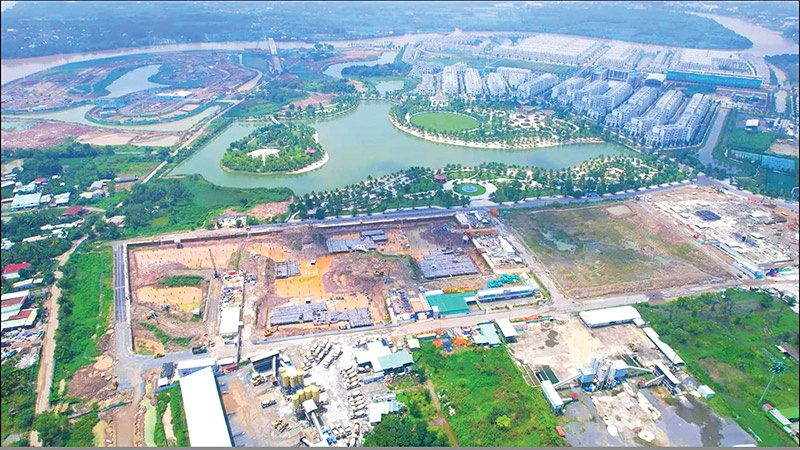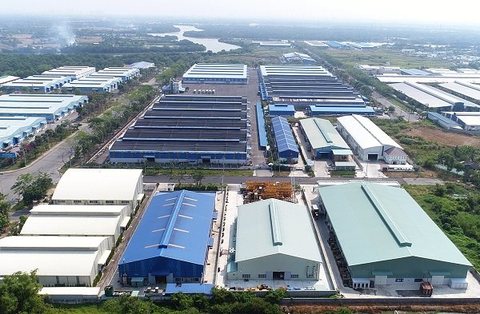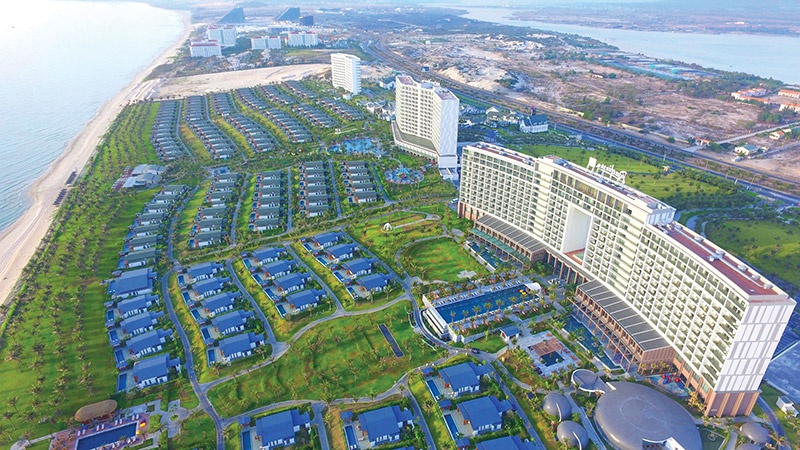Ensuring land prices on market principles
Ensuring land prices on market principles
The removal of the land price framework is seen as a step forward to help determine land prices close to the market and facilitate the work of compensation for site clearance and limit land speculation.

One of the new issues stemming from Resolution No.18-NQ/TW dated June 16, on the effectiveness of management and use of land, is the removal of the land price bracket and the mechanism and methods for determining land prices under market rules, according to experts and gathered through public opinion.
The land market of Vietnam has long existed as a dual-price mechanism. One is the land price according to the framework promulgated by the government every five years. From this framework, local people’s committees set up their own price lists for compensating people whose land is repossessed.
The second is the market price – the price traded directly on the market between the seller and the buyer, and the market price is always much higher than the local people’s committees’ set-up prices.
According to Assoc Prof. Dr. Nguyen Dinh Tho, general director of the Institute of Strategy and Policy on Natural Resources and Environment, the 2013 Law on Land stipulates that the land price in the framework must be equal to the market price, but in fact, is much lower than the market price. “The current land price framework of most localities is 30-60 per cent lower than the market price,” Tho said.
Thus, according to Resolution 18, removing the land price bracket will destroy the difference between the dual-land price mechanisms. From there, the land price will be decided by the market and ensure better benefits for people whose land is repossessed helping to speed up projects’ implementation.
At a national conference on research, study, and implementation of Resolution 18 held in July, Prime Minister Pham Minh Chinh said that the new breakthrough of the resolution is to remove the land price framework and stipulate a higher tax rate for users of many land areas, homes, and land speculation.
This is a matter of special concern, the prime minister emphasised, noting that the determination of land prices still has many shortcomings that lead to mistakes and losses in the state budget. “The breakthrough new point of Resolution 18 is to remove the land price framework and to have a mechanism and method for determining land prices according to market principles,” the PM said. “It also clearer stipulates the functions, tasks, and responsibilities of competent agencies on land price determination.”
Land price difference
The big gap between the provincial land price framework and the price in the real market led to the compensation price being determined also much lower and causes prolonged complaints and lawsuits from local people. For example, a project to restore and embellish the headquarters of the Supreme People’s Court located in Hoan Kiem district in Hanoi has hit a snag in recent times. Hoan Kiem People’s Committee applied the maximum compensation and incentives to the owners of the land whose land was repossessed and at the same time, applied a specific mechanism to ensure the interests of the people at the highest level. However, the price framework set by the state was very different from the market price.
According to batdongsan.com.vn, some locations in the Hoan Kiem district are advertised for sale at prices of up to billions of VND (over $100,000) per square metre. Meanwhile, according to the land price list in Hanoi effective from 2020, the price in some locations in the district ranges around VND188-400 million ($8,100-17,400) per sq.m.
Meanwhile, the framework of Ho Chi Minh City issued in 2015 determined some locations in District 1 to be around VND150 million ($6,500). However, the real price is now advertised as up to VND1 billion ($43,500) per sq.m.
Professor Dang Hung Vo, former Deputy Minister of Natural Resources and Environment, said that the price gap causes many consequences, with the most serious being land corruption. “This is one of the loopholes leading to the loss of budget revenue. In addition, brokers have lined on the adjustment of the land price framework to spread false information, inflate prices, and create a virtual fever. Therefore, the removal of the land price framework is a breakthrough to bring the land price back to its real value, and prevent land corruption,” Vo said.
He also emphasised that although the removal of the land price framework is positive, the implementation has been very slow so far, and the next step should be the removal of the land price list and replacing it with a land value map.
Worries raised
Besides the positive points, many experts and investors are concerned that the removal of the land price framework may cause the input costs of projects to rise, pushing up house prices.
Nguyen Van Dinh, vice chairman of the Vietnam Real Estate Association, said input costs may increase, but investors will be proactive in calculating and making plans from the beginning, bringing greater economic efficiency.
“It is possible that house prices will be higher, but higher to a certain extent acceptable to the market, but at a reasonable level only,” Dinh said.
Meanwhile, Nguyen Van Hau, general director of Asian Holdings, said that the removal of the land price framework should only be related to the secondary transactions while uncertain effectiveness is determined for the compensation activities. “Currently, apart from depending on the land price framework, there are several methods of calculating land use fees such as direct comparison or surplus calculation. Many businesses apply the surplus method, which will generate a land use levy,” said Hau.
Nguyen Quoc Hiep, chairman of the Vietnam Contractors Association, suggested it is necessary to clearly define what is said to be the “common land price in the market” with fluctuations to serve as a basis for adjusting the price list.
“The price of land fluctuates daily based on many reasons, and there is a situation of deliberately expanding the price. If based on fluctuations, there is a risk of continuous adjustment, causing instability and making things more difficult for developers when compensating land,” he said.
For businesses that have accumulated land and prepared land funds for project development, the removal of the land price framework actually does not affect the selling price of their products. However, for businesses that have to find new land funds for developing projects, the removal of the land price framework will be a factor that increases land costs, thereby potentially pushing up prices, according to Hiep.



















